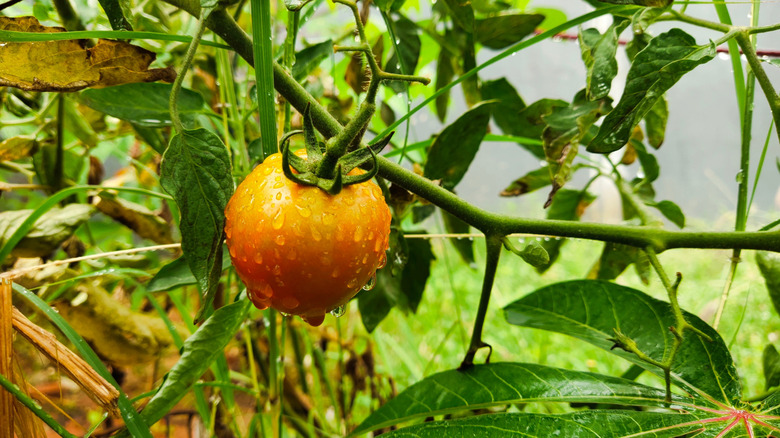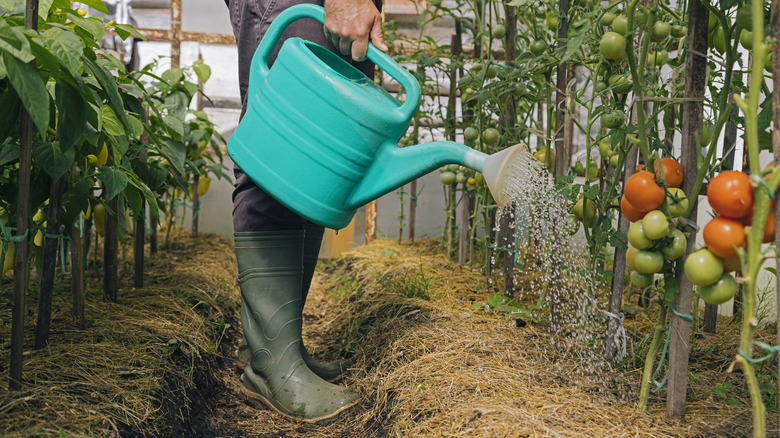The Simple Watering Tip That'll Keep Your Tomatoes Thriving And Free Of Disease
One heavy rain or a single round with the hose could be the thing that ruins your tomato crop. Any amount of water that falls directly onto the plant's leaves can carry fungal spores that could lead to blight — a fungal disease with the potential to wipe out your entire crop in weeks.
Tomato plants (Solanum lycopersicum) are especially vulnerable to blight. Blight thrives on moisture and warm temperatures, and once it takes hold, it can cause leaf spots, fruit rot, and serious yield loss. Thankfully, simply changing how you water can substantially lower the risk of blight. Instead of using an overhead sprinkler, water the base of your plant, avoiding its leaves. Drip irrigation is an ideal method, and soaker hoses can work as a more affordable choice. These deliver the moisture your tomato plant needs directly to its roots, which is key to limiting the spread of blight.
Another thing to keep in mind is that the best time to water your tomato plants is in the morning. This way, the leaves have enough time to quickly dry out during the day, keeping humidity low. You must keep the soil consistently moist and aim for about 1 to 2 inches of water per week, adjusted for rainfall. Letting the soil dry out between deep watering sessions can help the roots grow stronger, while too much or too little water may stress the plant and increase its disease susceptibility. This is a small change, but it can keep your tomatoes healthier all season long.
Simple practices for a blight-free tomato crop
While watering your tomatoes correctly is key, other simple practices can help keep your plants healthy and resistant to fungal diseases. A layer of organic mulch at the base of each plant reduces soil splash during rain and watering. This stops the soil-borne spores from reaching the leaves and keeps your tomato plants blight-free with a simple addition of straw or shredded leaves. Mulch is also a great way to retain moisture, so you can water them less frequently.
Pruning could be another smart move. Remove any lower leaves that are drooping or show signs of yellowing or spotting to improve air circulation around the plant, discouraging fungal growth. Keeping the foliage off the soil is also important. Whether you use cages or stakes, a support system will lift the plant's stems and limit the contact between leaves and damp ground, reducing opportunities for disease to grow.
Additionally, avoid planting tomatoes in the same spot year after year. This practice, called crop rotation, disrupts the life cycle of harmful pathogens that linger in the soil. Combined with proper watering, these steps form a low-effort routine that protects your tomato crop and boosts the chances of a successful, long-lasting harvest. A little water in the right place can save you a season's worth of tomatoes and trouble.

